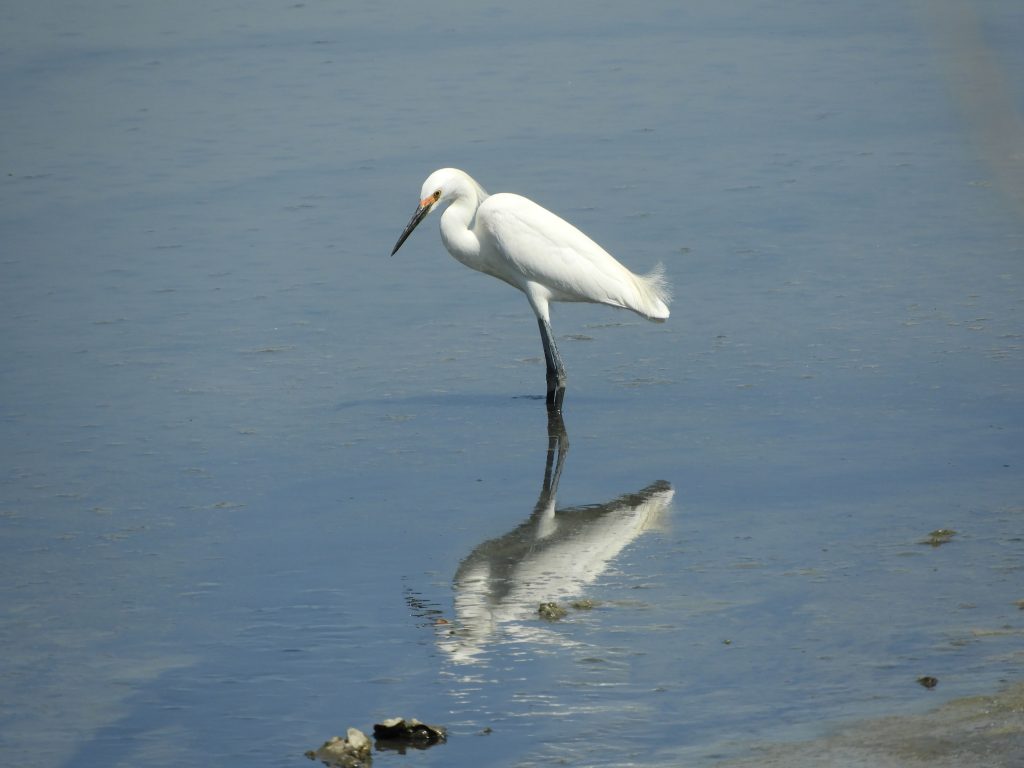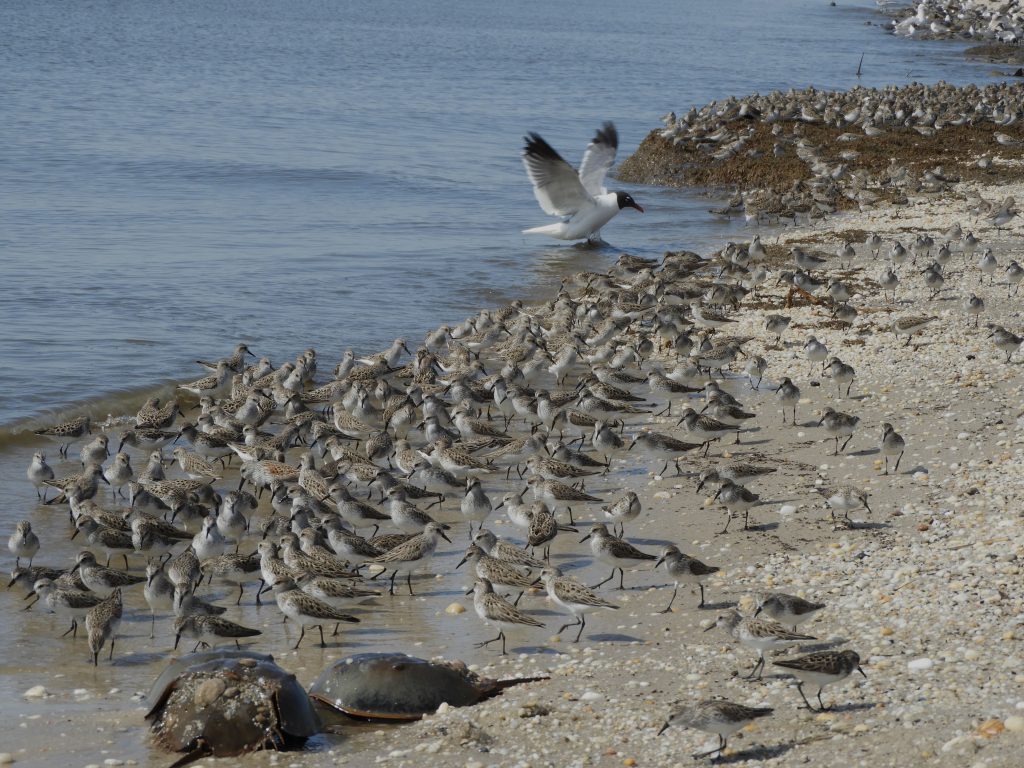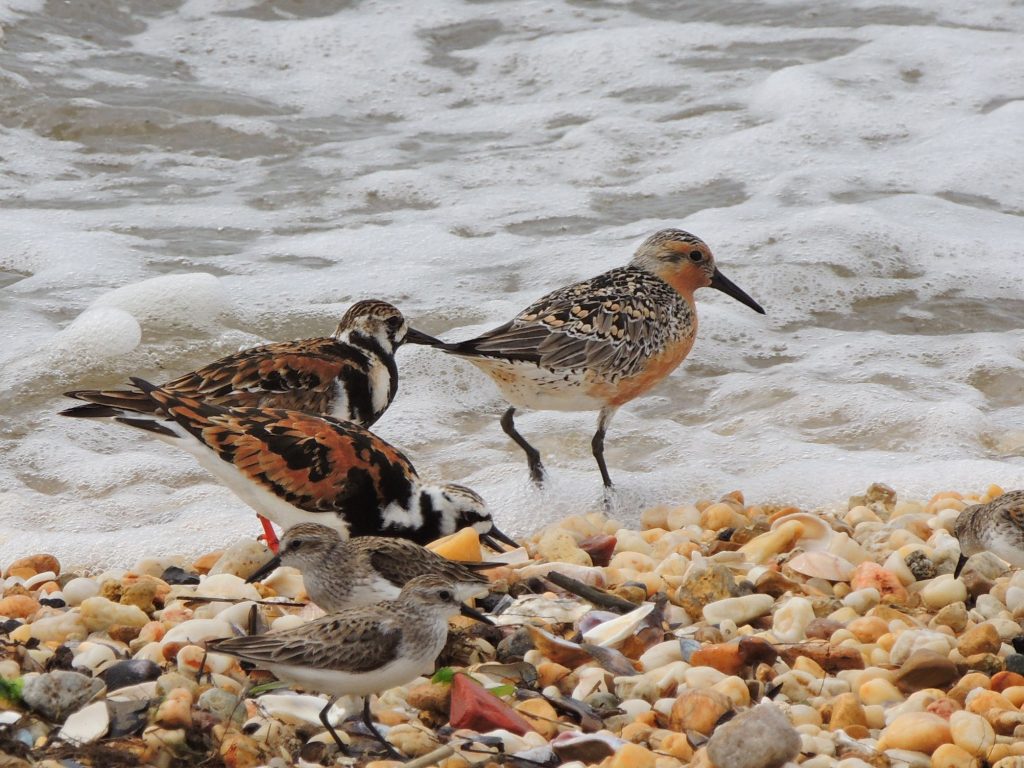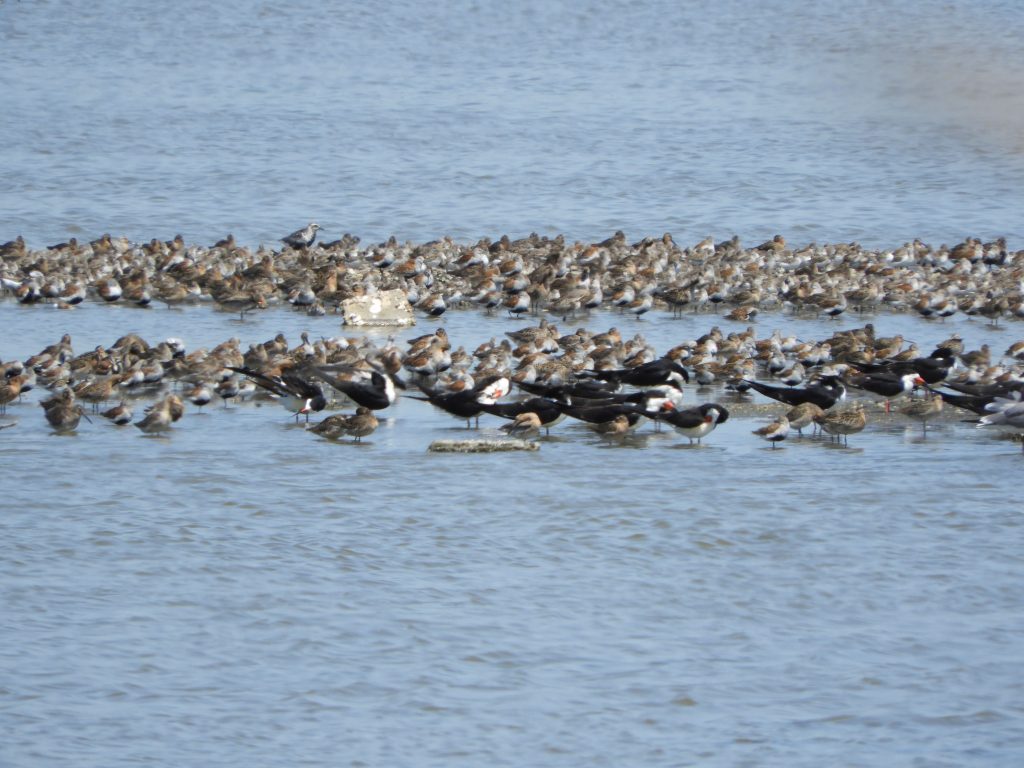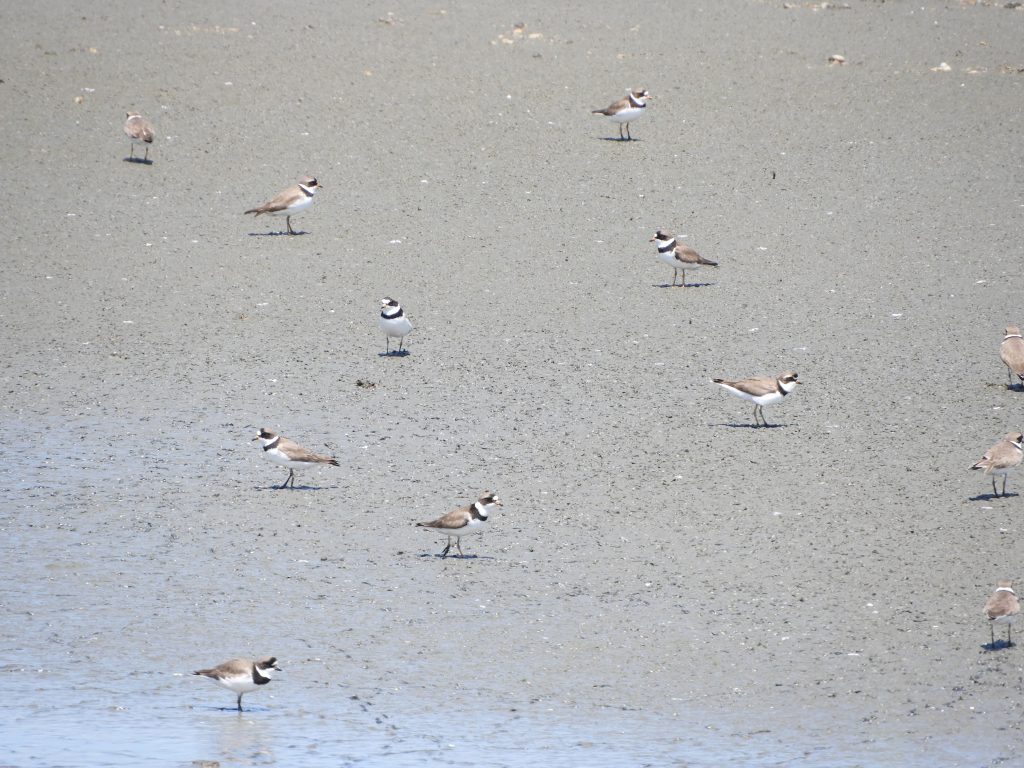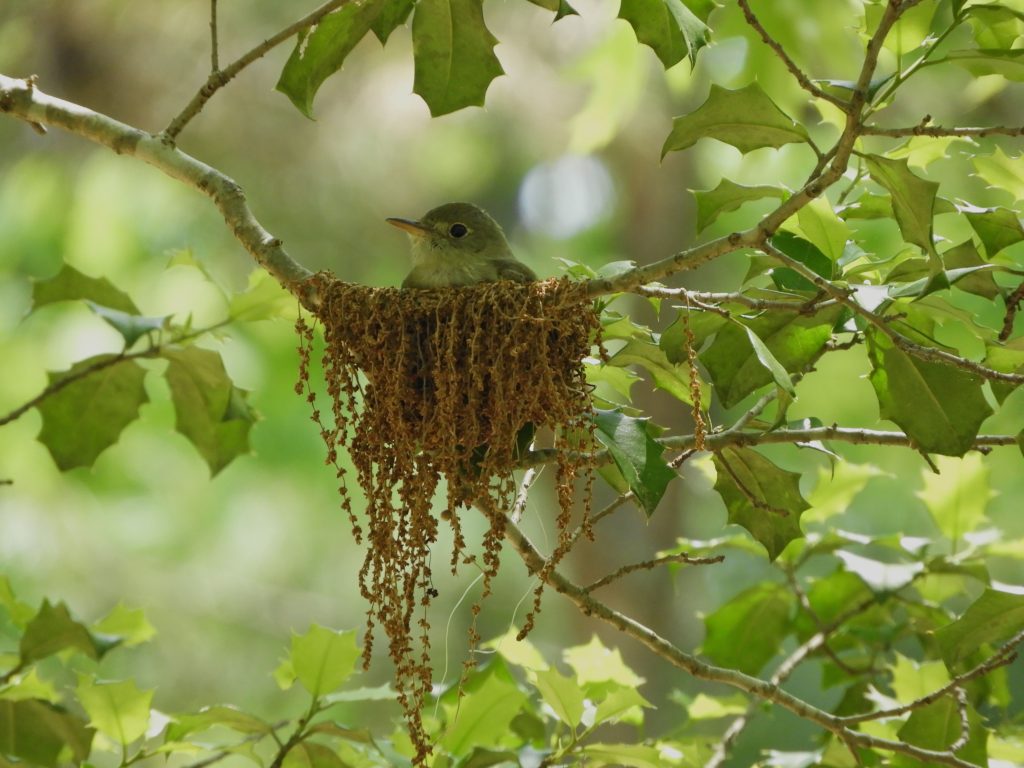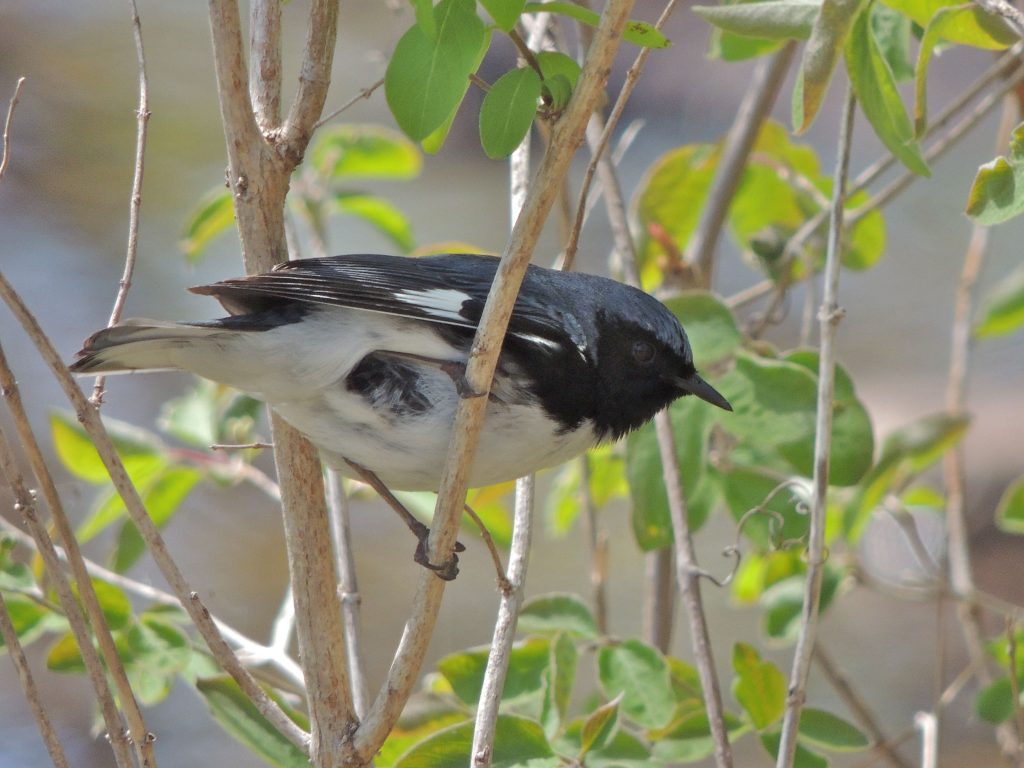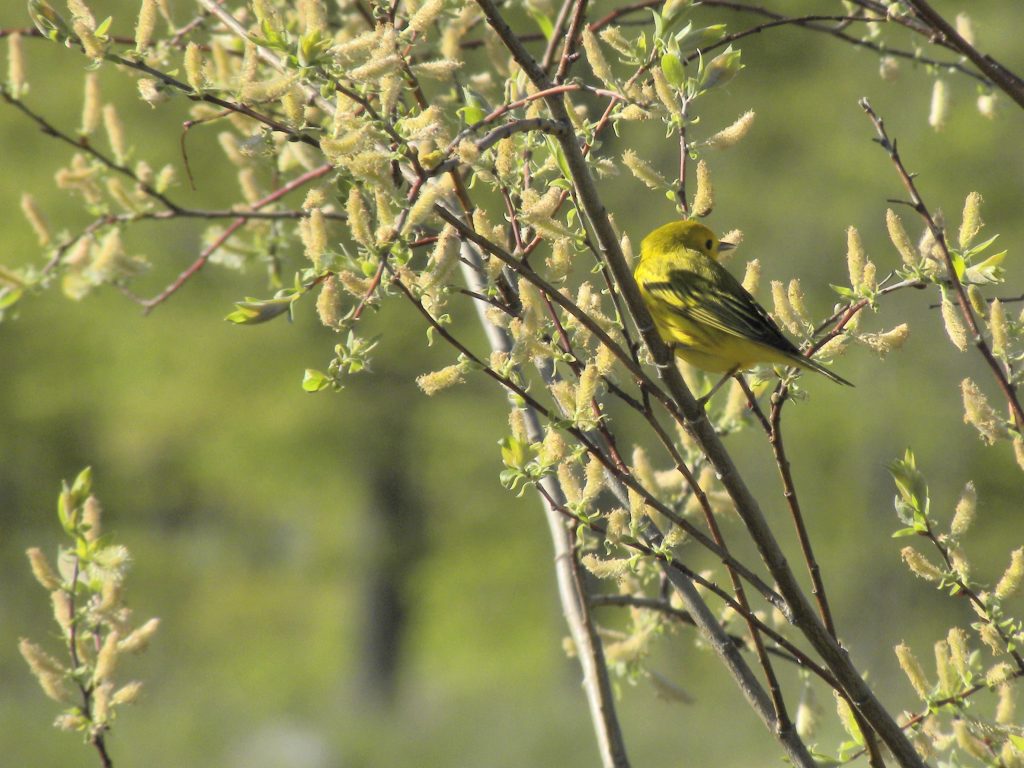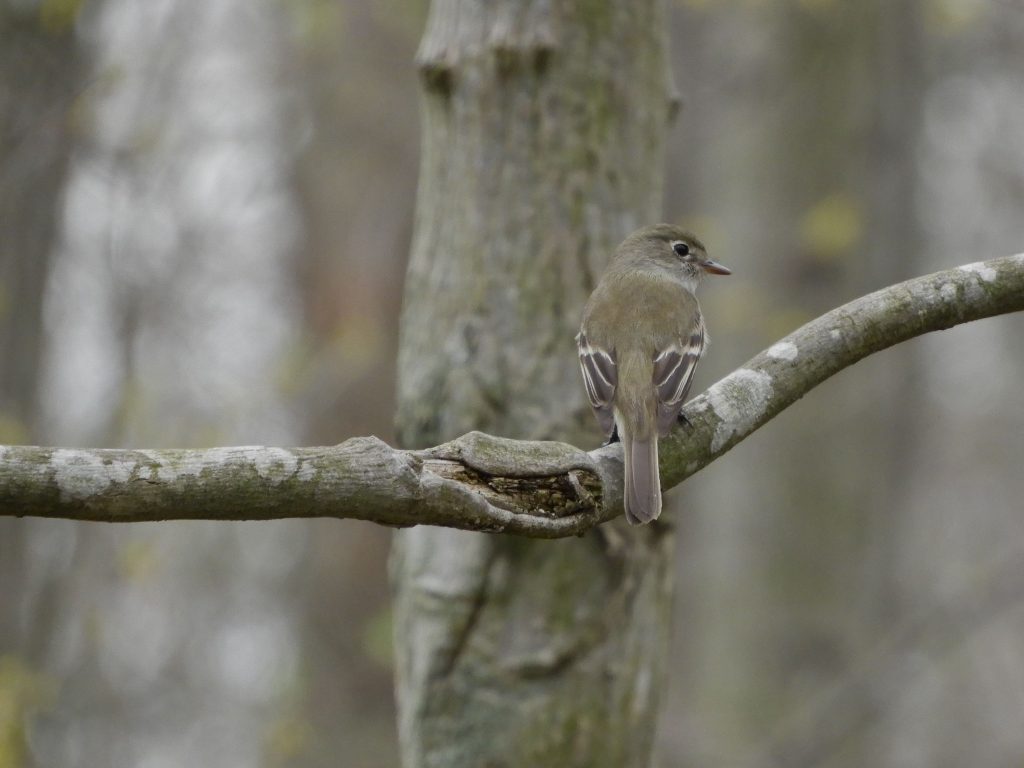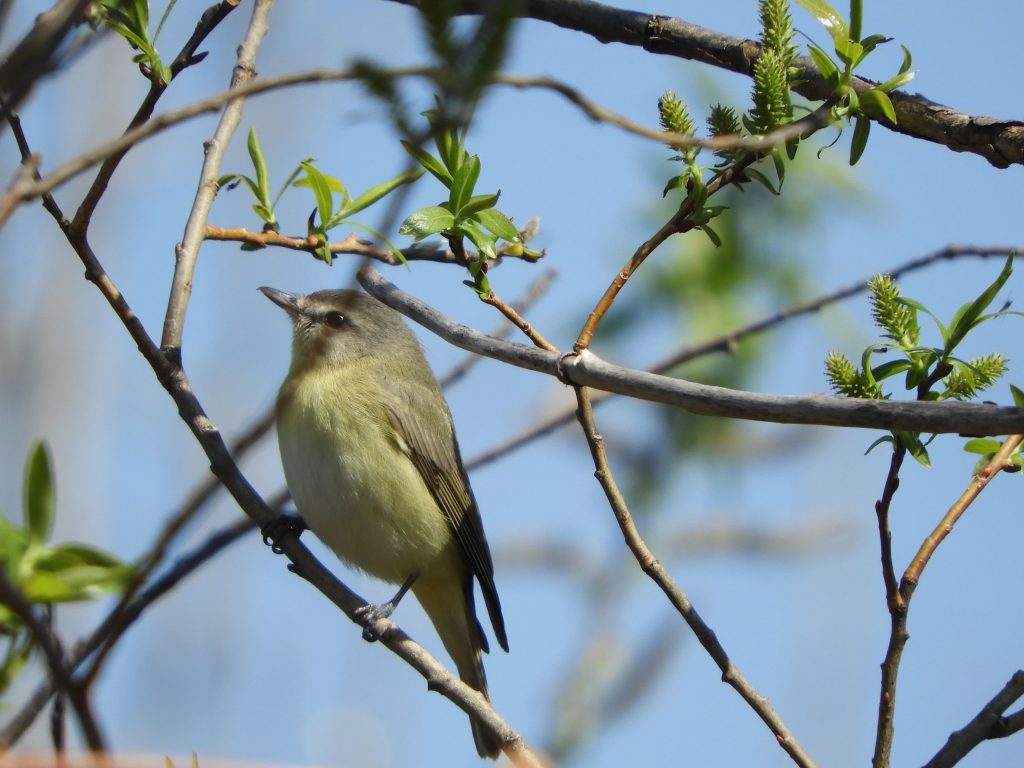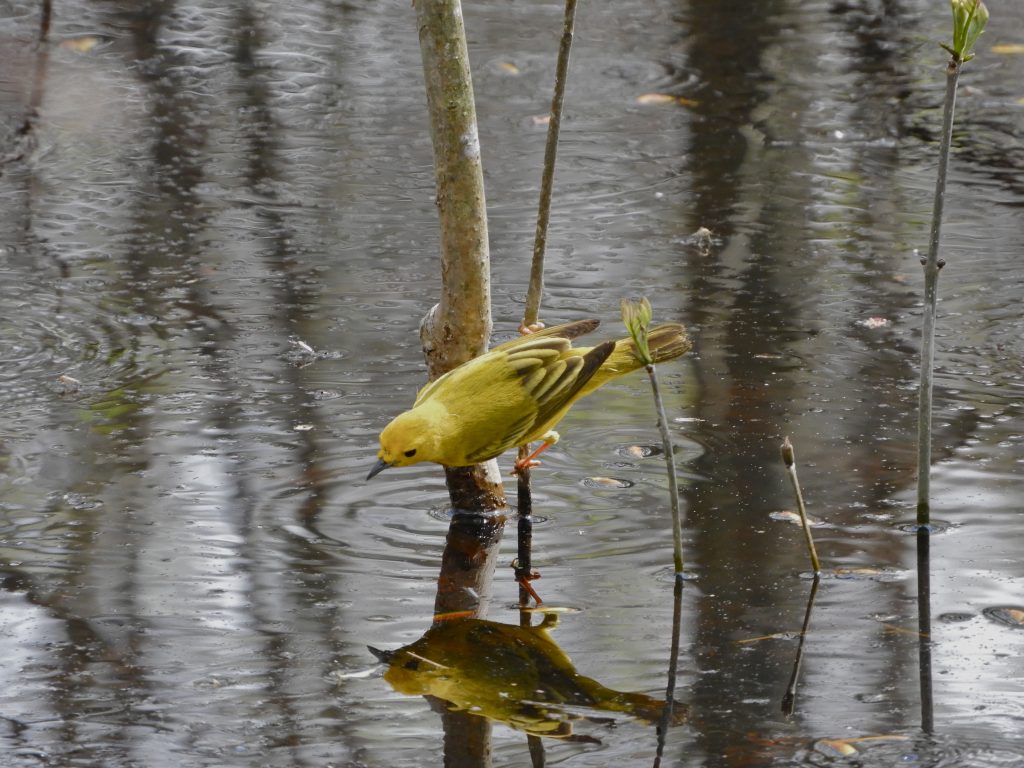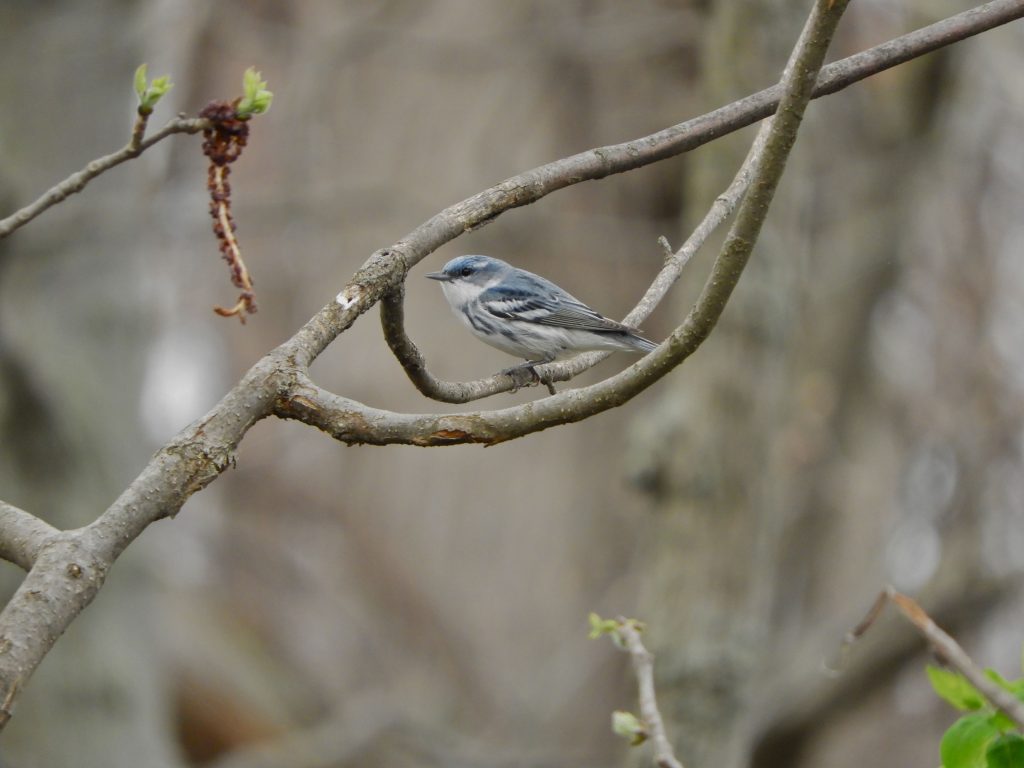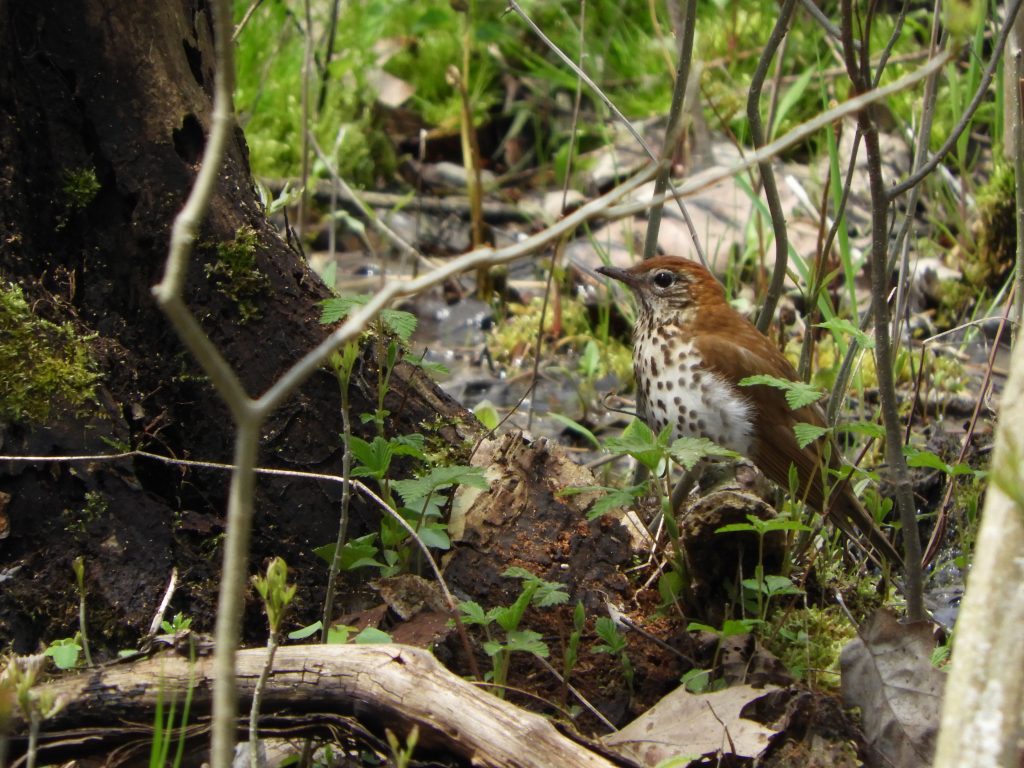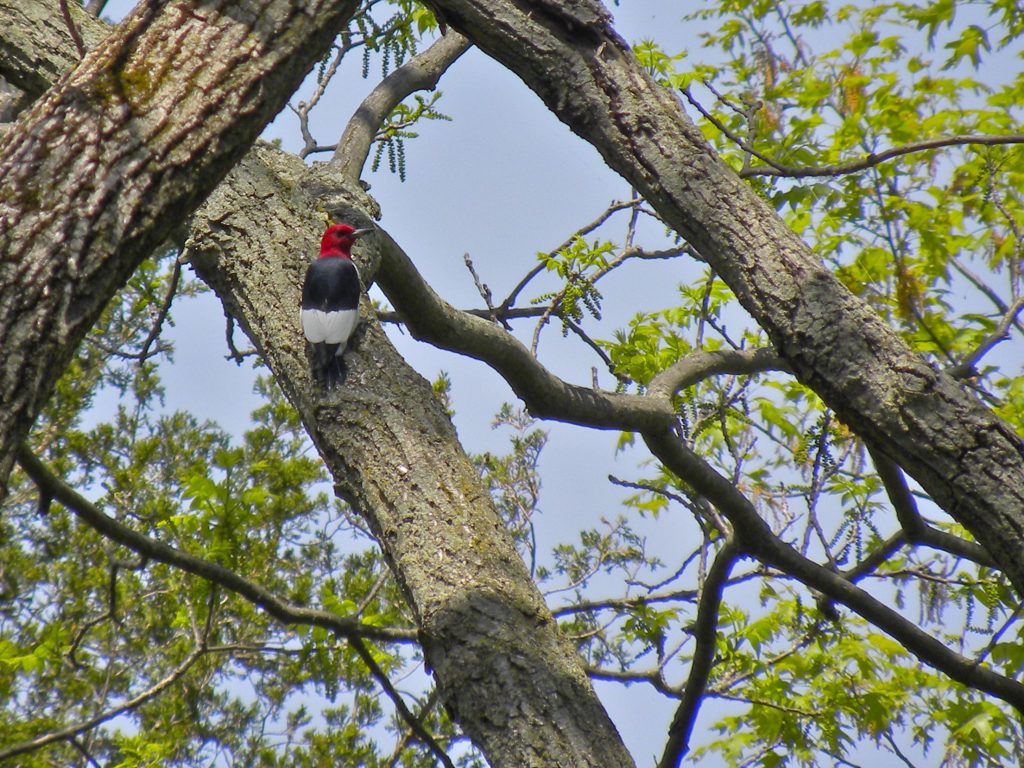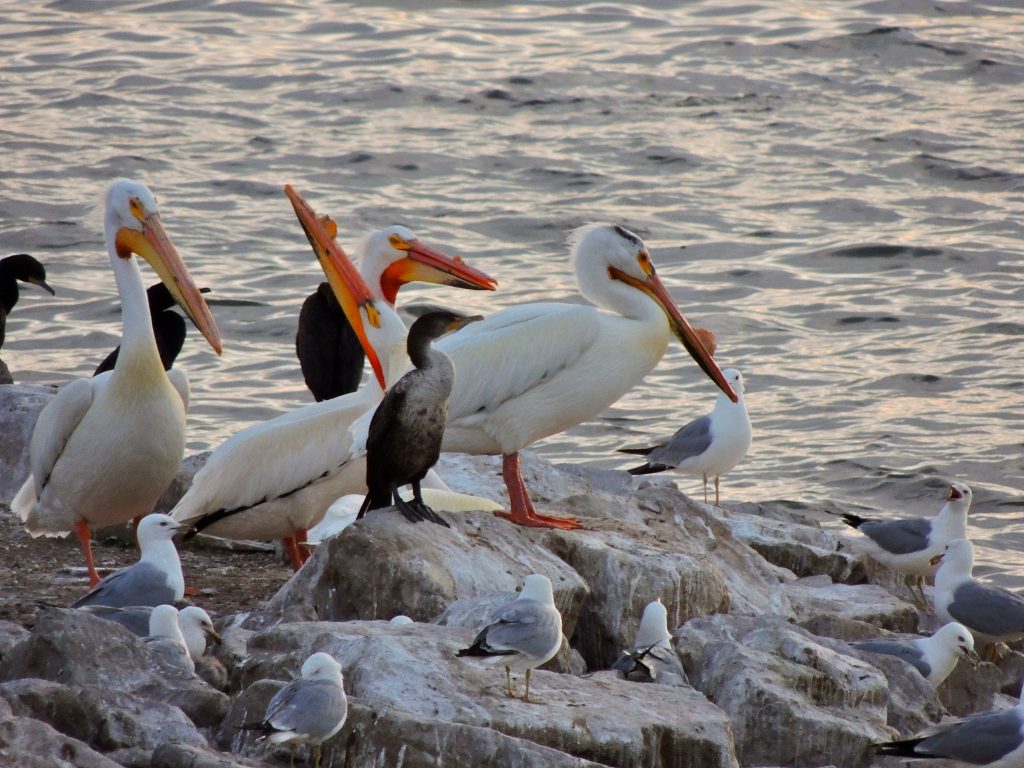May 21-23 2018, Wetlands Institute, Stone Harbor, NJ. Four years (and a bit) ago I made my first trip to Cape May. I went alone and was smitten by the place, not only by the variety and numbers of birds but also by the shoreline and marsh habitats, which were totally new to me, and the beautiful broadleaf forests.
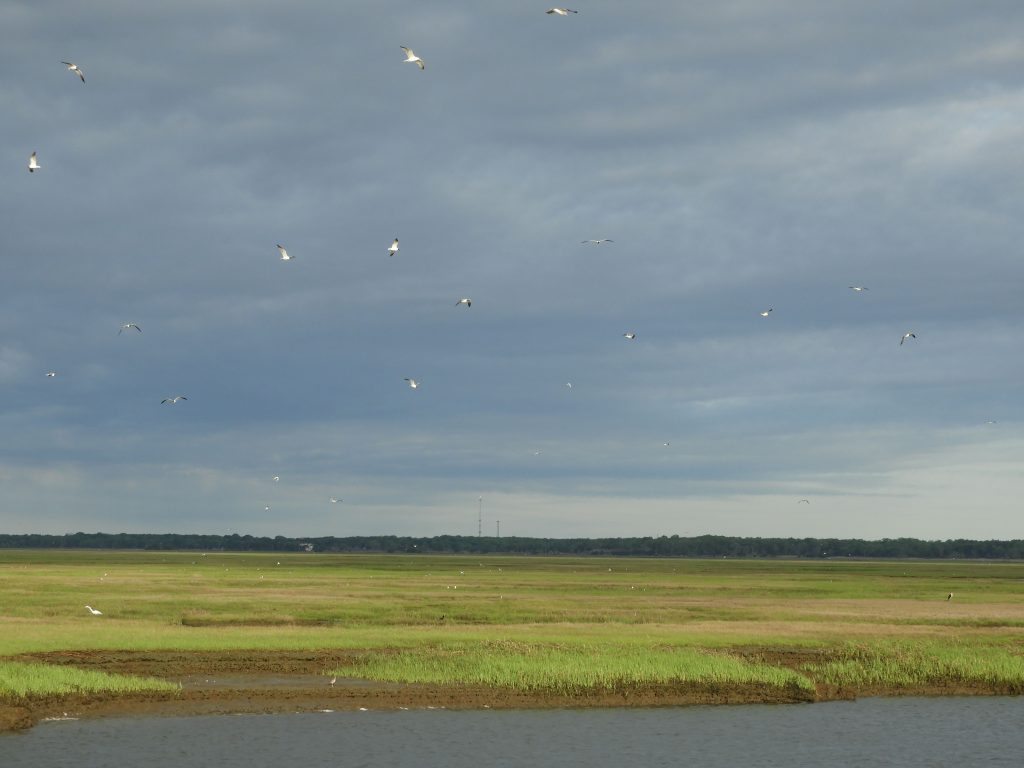
I returned three years ago with a friend, Dan, and we loved every minute of it for all the same reasons. Today I’m back for the third time with high expectations (well actually make it fourth time because we made an overnight stop here one October) .
I remember encountering Clapper Rails on that first trip and being quite mystified. I could hear them (you could hardly miss them), but seeing them was ridiculously difficult, a glimpse was about the best I could hope for. Their calls seemed to come from the depths of the salt-marsh muds. In my entry for that late April, first day, I wrote: “I spent quite a bit of time trying to spot Clapper Rails, a fairly common bird found in these parts, but it’s so elusive that it both intrigues and frustrates me. It’s a dowdy, mottled grayish-brown, chicken-size bird with a nine-inch long decurved bill. Rarely flying far or for long, it struts and stalks around in the salt-marsh grasses, which at this time of year lie largely winter flattened, and where for the most part it refuses to show itself. But you hear them almost constantly. Presumably they greet each other from time to time, but in order to stay in contact they communicate noisily with a loud and odd series of notes that sounds like a rhythmic, almost industrial, scratching.”
That was at the end of April, but this time, three weeks later on, Clapper Rails were just as noisy but astonishingly easy to see, particularly in the last hours of daylight. The dense marsh grasses have grown to a foot or so, an easy place to get thoroughly lost in but perhaps they now need to come up for air.
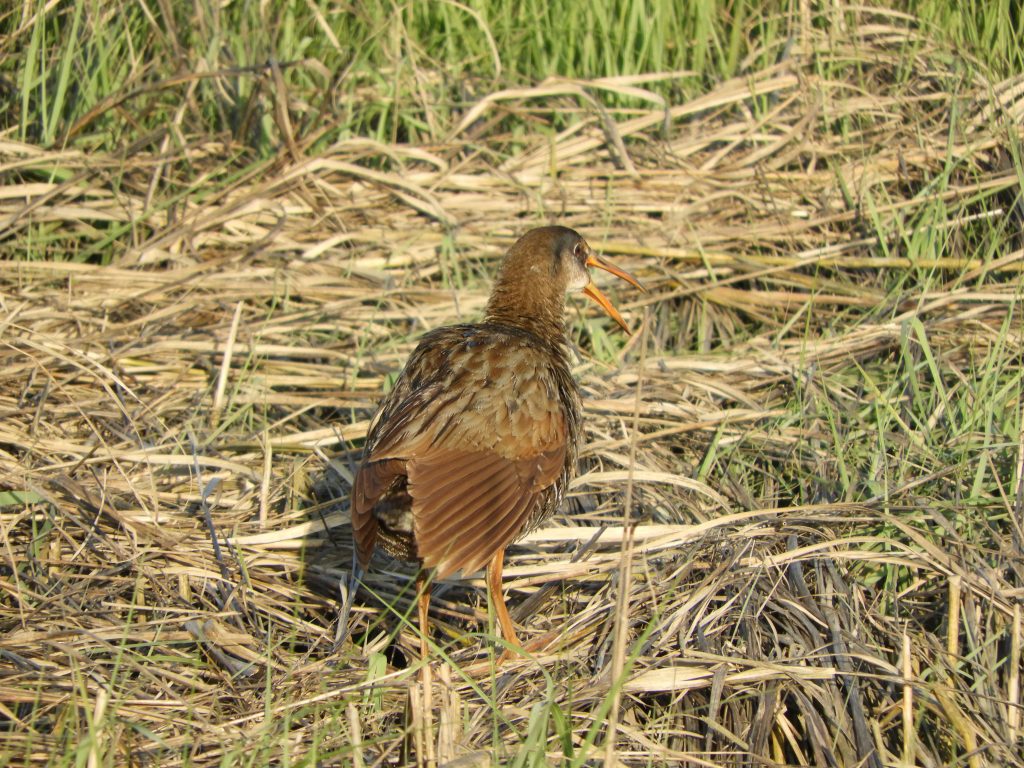
The expanse of salt-marsh is threaded with gullies, muddy at low tide and swirling with coffee-coloured salt water at high. The Atlantic’s tidal ebb and flow stays in touch with the marsh by these gullies and the Clapper Rails use them as convenient highways, walking or swimming, depending on conditions. We watched individuals calling to their neighbours, exposed to the cold light of day and using exaggerated beak claps while bobbing their hind quarters to the rhythm of the repeated ‘sccrrraaattt scrrraaattt scrrraaattt’ notes.
I managed to take several photos, some of them with the birds standing up as if wanting to be seen and on a couple of other occasions when one of them sauntered down the river’s edge for a quick bath.
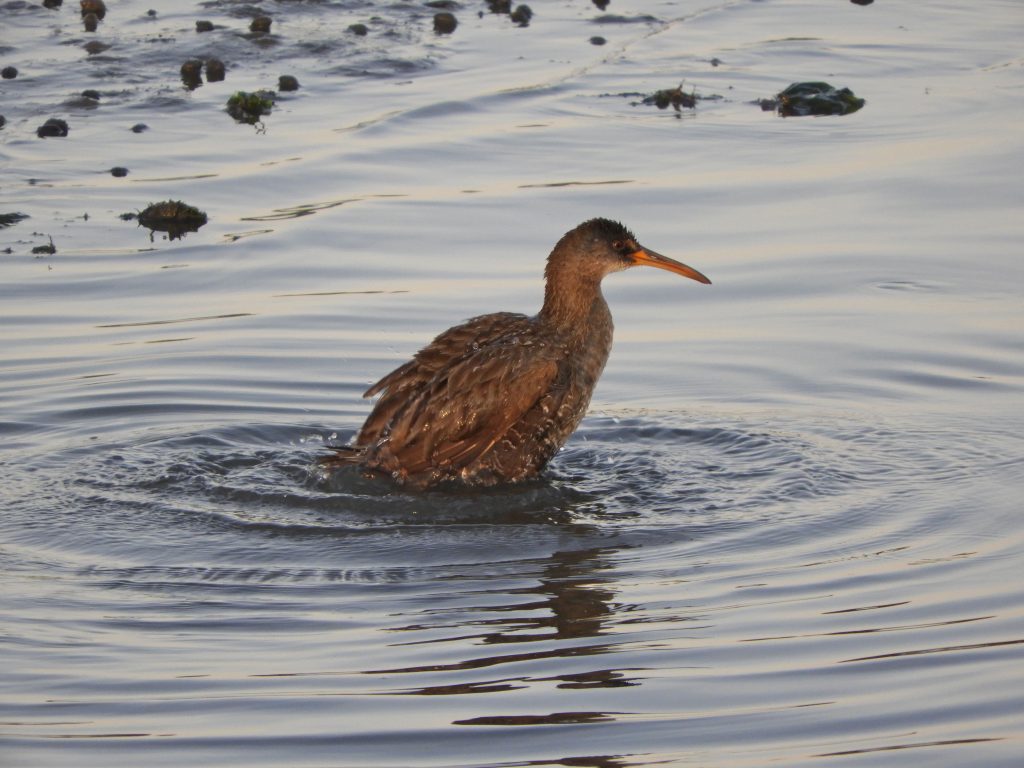
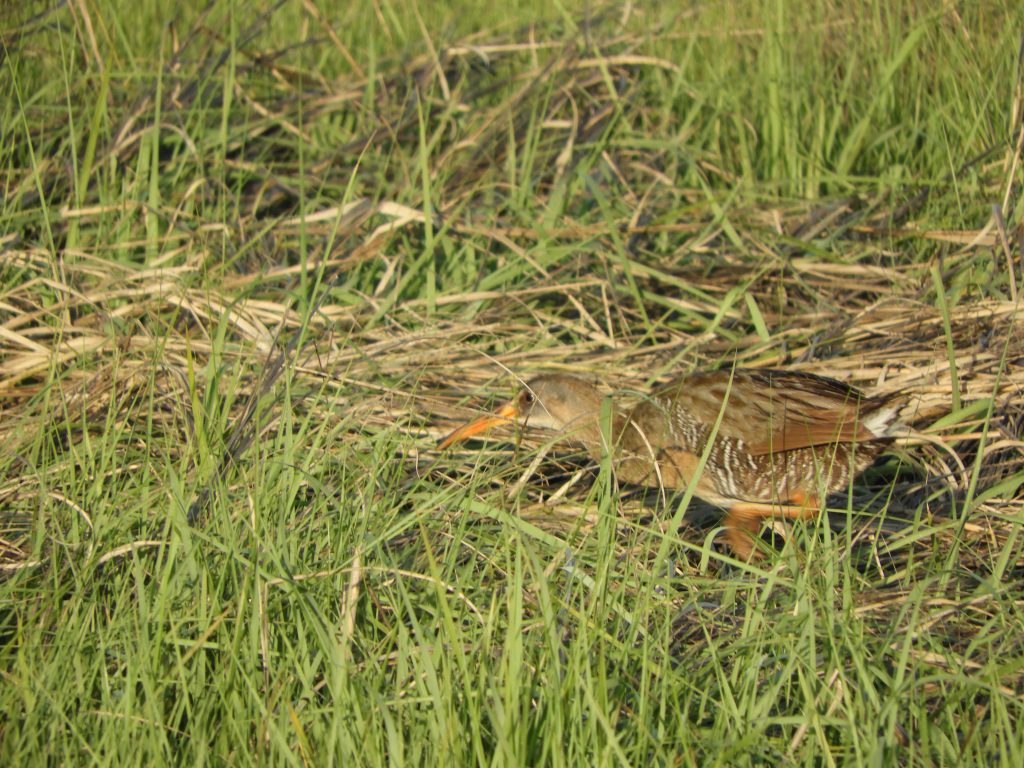
Rather than Clapper Rails being Bird of the Day on any particular day, I think Bird of the Evening is where they belong. And, it should be said, they were in the company of Snowy Egrets, Dunlin, Least Sandpipers, Semi-palmated Sandpipers, Short-billed Dowitchers, Fish Crows, Forster’s Terns, Common Terns, Willets and Black Skimmers.
